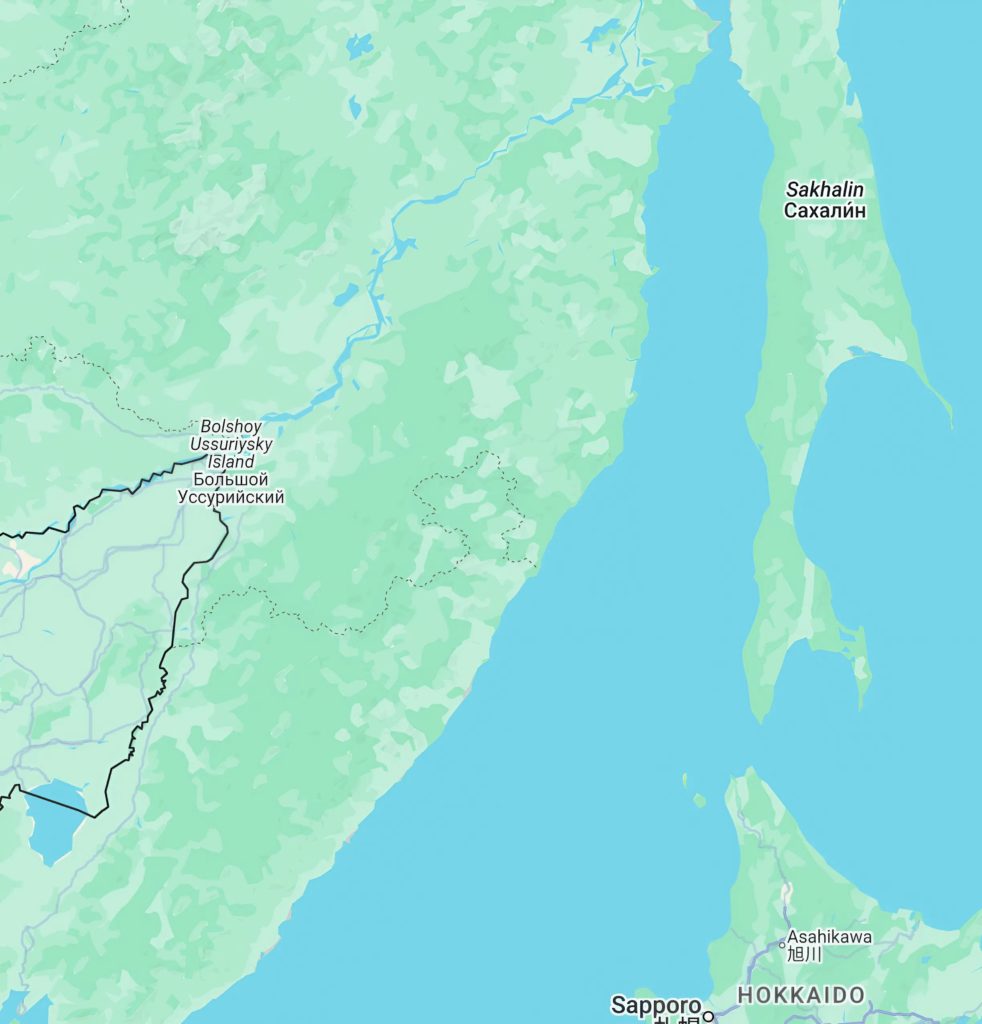Russian Geopolitical Challenges: A Window into Sino-Russian Territorial Tensions
China has become the largest trading partner and foreign investor in the Russian Far East, pouring significant funds into infrastructure, energy, agriculture, and port development, particularly since the mid-2010s. At the same time, the region has seen a steady influx and concentration of Chinese residents, especially in key urban centers and border region.
Chinese companies have established a significant presence across the Russian Far East, focusing on regions with development incentives, border proximity, and robust trade infrastructure. The concentration of Chinese businesses is especially high in cities and regions that host special economic zones, cross-border bridges, and advanced development territories.
There are over 53 Chinese companies operating in 18 advanced development territories and 22 ports across the Russian Far East, with planned investment exceeding 816 billion rubles. The highest concentrations of Chinese businesses are found in Vladivostok, Khabarovsk, Birobidzhan, and key towns in the Amur Region. The main investments follow the Chinese global trend of shaping their informal empire, namely in Infrastructure, ports, energy, manufacturing, agriculture, logistics, and forestry.
But what might this lead to in the longer run in terms of expansion of Chinese reach through Russia to the Pacific?
There territorial relationship remains a troubled one.

At the confluence of the Amur and Ussuri rivers, where Russia’s Far East meets China’s northeastern frontier, lies a sedimentary island that has become emblematic of the complex territorial relationship between two of the world’s most powerful nations.
Bolshoy Ussuriysky Island, known in Chinese as Heixiazi Island (Black Bear Island), represents both the successful resolution of historical border disputes and the enduring tensions that characterize Sino-Russian relations in the 21st century.
The roots of the Bolshoy Ussuriysky Island dispute stretch back to the mid-19th century, when a weakening Qing dynasty was forced to cede vast territories in what is now known as Outer Manchuria to the expanding Russian Empire. The 1858 Treaty of Aigun and the 1860 Convention of Peking transferred control of approximately 600,000 square miles of territory to Russia, including the regions that now comprise Primorsky Krai, southern Khabarovsk Krai, the Jewish Autonomous Oblast, and the Amur Oblast.
China has never fully accepted the legitimacy of these territorial transfers, viewing them as “unequal treaties” imposed during a period of national weakness. This historical grievance has shaped Chinese territorial claims well into the modern era, creating a foundation for ongoing tensions over border demarcation.
Bolshoy Ussuriysky Island’s location makes it strategically crucial for both nations. Covering approximately 327 to 350 square kilometers, the island sits directly adjacent to Khabarovsk, a major Russian city with a population of 620,000. For Russia, control of the island historically provided a comfortable buffer zone for Khabarovsk and complete control over the Amur and Ussuri waterways, while denying Chinese ships navigational access to these rivers.
The difficulty in resolving the island’s status stemmed from these competing strategic interests. Russian occupation of the entire island violated international waterway principles that typically place river islands on the side of the main shipping channel.
Tensions over river islands along the Sino-Soviet border reached a dangerous crescendo in 1969, when disputes erupted into armed clashes that brought the two nations to the brink of war. The most serious confrontation occurred in March 1969 at Zhenbao (Damansky) Island on the Ussuri River, where Chinese forces executed a planned ambush against Soviet border patrol.
According to historical accounts, around 11:00 on March 2, Chinese forces ambushed an unsuspecting Soviet border patrol, inflicting heavy casualties and catching Soviet commanders completely by surprise. The escalation of these border clashes represented the most dangerous moment in the Sino-Soviet split, with both sides possessing nuclear weapons and the potential for conflict to spiral into global catastrophe.
The end of the Cold War opened new possibilities for resolving these long-standing territorial disputes. In 1991, China and the USSR signed the Sino-Soviet Border Agreement, beginning a process that would ultimately take more than a decade to complete. The dissolution of the Soviet Union later that year transferred responsibility for these negotiations to the Russian Federation.
The breakthrough came on October 14, 2004, when Russia and China signed the Complementary Agreement on the Eastern Section of the China-Russia Boundary. Under this agreement, Russia agreed to transfer approximately 170 square kilometers of Bolshoy Ussuriysky Island to China, while retaining the remainder under Russian jurisdiction. The agreement also included the complete transfer of Yinlong (Tarabarov) Island and several smaller river islets to Chinese control.
Both the Chinese National People’s Congress and the Russian State Duma ratified the agreement in 2005, formally ending decades of territorial dispute. The official transfer ceremony took place on-site on October 14, 2008, marking what both governments proclaimed as the final resolution of all border disputes between the two nations.
Since the 2008 implementation of the border agreement, the two halves of the island have developed along markedly different trajectories. Chinese investment has transformed their portion into what one observer described as resembling “Disneyland,” with major infrastructure improvements including a large nature reserve, border defenses with watchtowers, and a bridge connecting the island to the Chinese mainland.
In contrast, the Russian side remained largely undeveloped for many years, with the only major improvement being the Amurskaya Creek Bridge connecting the island to Khabarovsk. This disparity in development reflects broader patterns in the Russian Far East, where Chinese economic dynamism increasingly contrasts with Russian underinvestment in border regions.
Despite the formal resolution of territorial disputes, recent events have reignited concerns about Chinese territorial ambitions. In August 2023, China’s Ministry of Natural Resources published a new edition of its “standard map” that appeared to claim the entire Bolshoy Ussuriysky Island as Chinese territory, including the portion that had remained under Russian control.
The map’s publication prompted a swift response from Moscow. Russian Foreign Ministry spokeswoman Maria Zakharova issued a statement emphasizing that “the Russian and Chinese sides adhere to the common position that the border issue between our countries has been finally resolved” and that “the delimitation and demarcation of our common border has been completed along its entire length”.
Chinese Foreign Ministry spokesperson Wang Wenbin characterized the map’s publication as “a routine practice in China’s exercise of sovereignty in accordance with the law,” while urging relevant sides to “stay objective and calm, and refrain from overinterpreting the issue”.
The Bolshoy Ussuriysky Island controversy occurs within a broader context of expanding Chinese territorial assertions across multiple regions. The 2023 map also included contested territories in the South China Sea, areas disputed with India in Aksai Chin and Arunachal Pradesh, and added a tenth dash to China’s South China Sea claims.
Some analysts view these territorial assertions as part of China’s broader strategic ambitions tied to what Beijing sees as the “centenary of China” in 2049, when the People’s Republic will mark its 100th anniversary. According to some Chinese strategic thinking, achieving global prominence may require addressing historical territorial grievances, including those with Russia.
Despite these tensions, both governments have sought to manage the relationship through cooperative frameworks. In May 2024, during a state visit by President Vladimir Putin to Beijing, both leaders signed a roadmap for the “joint development” of Bolshoy Ussuriysky Island¹⁷. Officials announced plans to build a transit checkpoint that could handle up to 1.5 million passengers and more than 1.3 million tons of cargo annually by 2030.
Russian officials have characterized these developments as making the island a “place of Russian-Chinese friendship.” However, the joint development formula may represent more of a declaratory statement emphasizing Russian sovereignty while acknowledging increased economic dependence on Beijing.
The island dispute reflects broader economic dynamics in the Russian Far East, where Chinese investment has become increasingly crucial. By the end of 2023, investment projects with Chinese participation in the Russian Far East had reached 49 projects with nearly $9 billion invested. This economic relationship has become even more critical for Russia following the 2022 invasion of Ukraine and subsequent Western sanctions.
China’s economic influence in the region extends beyond simple investment. Chinese companies can now access sectors previously closed to foreigners due to security barriers, including defense industries concentrated in the Far East that are desperately needed for Russia’s war effort.
This economic dependence creates a complex dynamic where Russia must balance sovereignty concerns with practical needs for Chinese support.
The Bolshoy Ussuriysky Island case illustrates the broader challenges facing Sino-Russian relations despite their proclaimed “limitless friendship.”
While both governments maintain that territorial disputes have been definitively resolved, the persistence of Chinese maps claiming Russian territory suggests that historical grievances remain beneath the surface of official diplomacy.
The island’s strategic location near Khabarovsk means that any future changes in its status could have significant implications for regional security architecture.
The development of joint infrastructure and increased Chinese economic presence creates facts on the ground that could complicate future territorial arrangements, regardless of formal agreements.
Bolshoy Ussuriysky Island serves as a microcosm of the complex relationship between China and Russia in the 21st century.
While the 2008 resolution of the territorial dispute represented a significant diplomatic achievement, recent developments suggest that historical territorial grievances continue to influence Chinese strategic thinking.
The island’s future will likely depend on the broader trajectory of Sino-Russian relations, China’s growing economic influence in the Russian Far East, and Russia’s capacity to develop its eastern territories independently.
Or put another way, one cost of his invasion of Ukraine for Putin could be losing the Russian Far East to Chinese economic reach, demographic take over of the Far East and the attraction of the new Chinese Far East for access to the Pacific.

